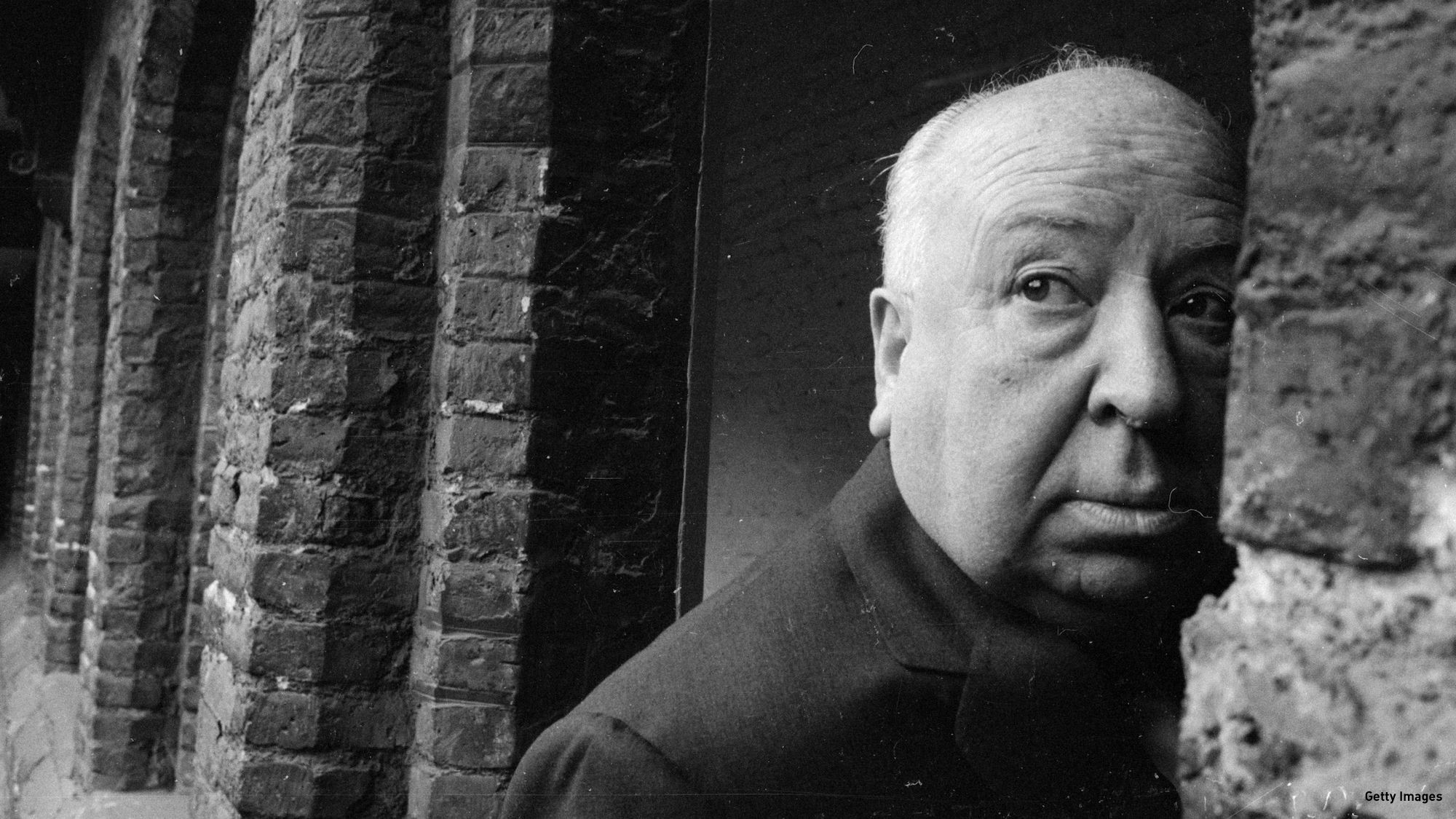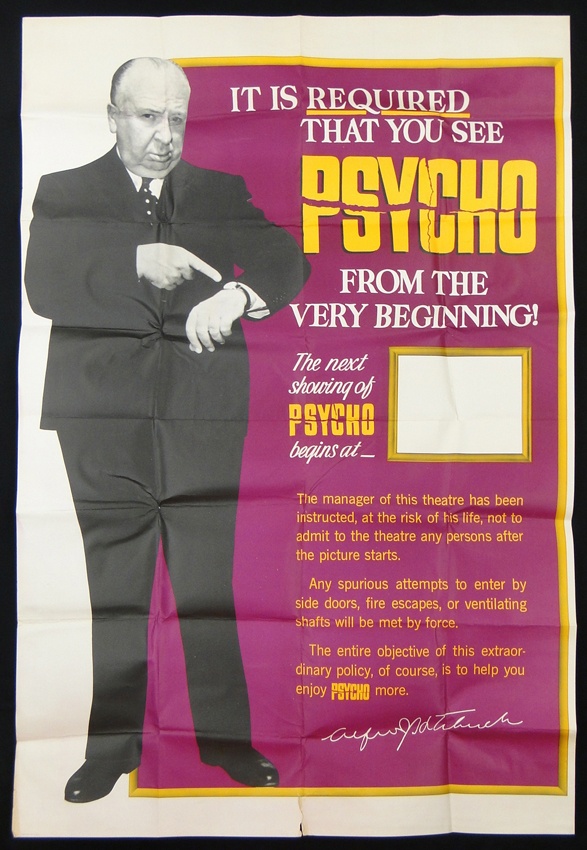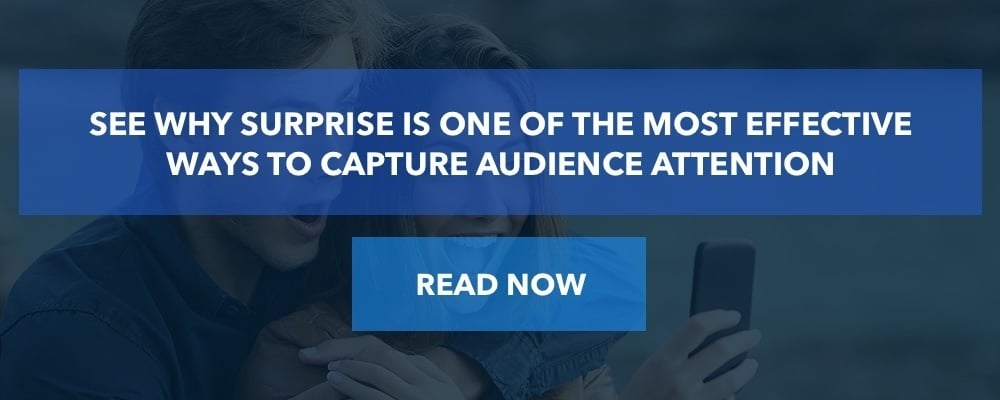
Tell me if you remember this scene. Ad man, Roger Thornhill (played by Cary Grant), is standing on an isolated highway, watching a crop dusting plane circle in the distance. He’s wearing an impeccable kilgour plaid suit, resembling something Sean Connery would wear in a James Bond movie. What this Madison Avenue ad man is doing in a Midwestern cornfield is not really important for this article. All you really need to know is that he’s on the run after being mistaken for someone else.
Suddenly, the crop duster turns its direction and starts to fly towards him. What follows is one of the great chase sequences in cinema history. As Thornhill runs for his life, dodging bullets fired from the plane into the cornfields. It’s a breathtaking sequence from North by Northwest, produced and directed by legendary filmmaker Alfred Hitchcock, who revolutionized the cinematic art of suspense.
The Bomb Under the Table
Hitchcock credited much of his films’ success to what he called the “bomb theory”- his analogy for the distinction between surprise and suspense.
In Hitchcock’s theory, there are two scenarios. In the first, two people are having a conversation while a bomb is ticking under the table. The bomb explodes. The viewer is surprised momentarily because there was no indication anything out of the ordinary was going to happen.
In the second scenario, the bomb is underneath the table, but the viewer knows it’s there. They also know that in fifteen minutes that bomb is going to explode, which
creates nail-biting suspense. According to Hitchcock, the second scenario is more captivating because the audience is actively participating in the scene and they are dying to warn the characters.
Advertisers can learn a lot from Hitchcock’s bomb theory. Yes, a 30-second ad is a heck of a lot less time to build suspense than a two hour movie, but it’s absolutely possible, and what better person to turn to for inspiration than the master of suspense himself?
Check out these Hitchcock inspired tips on the best ways for building suspense in your video ads:
Advertising Lessons From The Master of Suspense
1. Make Your Audience an Active Participant
First, let’s take a look at a classic scene from The Birds which shows how Hitchcock uses suspense to engage the audience. In this scene, Tippi Hedren’s character, Melanie, sits on a bench smoking a cigarette near a children's playground. She doesn’t notice the birds that are gathering on the jungle gym behind her. Hitchcock masterfully cuts back and forth between closeups of Melanie and the birds perched behind her. Every time he cuts to the birds, there are more. Similar to the North By Northwest sequence mentioned earlier, the audience is an active participant in the film and notices the threat to Melanie two long minutes before she does. This creates almost excruciating tension, as the audience is helpless to warn her. All they can do is wait and see if Melanie will get out of there in time.
Check out the full scene below.
Recently, Audi released a commercial inspired by The Birds. The only difference is the birds are replaced by menacing drones. In the ad, office workers run out of a building, seeking shelter in their vehicles as the drones chase after them. Of course the gentleman with the “advanced technology” of the Audi is protected from the drones. Even though the ad is a parody of the classic Hitchcock film, it still does a great job at creating suspense. Like the playground scene in The Birds, the audience immediately sees the impending danger (the drones) and is left helpless to watch whether the characters escape. In this case, there isn’t a slow build up of tension like in the scene with Melanie - rather the threat is immediate and unrelenting, but it still produces a similar unnerving effect.
2. Revert Expectations with a Surprise Twist
Hitchcock loved to create rising tension and then surprise his audience. Think of the famous shower scene in Psycho. For the first 40 minutes we’ve been following Marion, Janet Leigh’s character, who is on the run after embezzling 40,000 dollars from her employee. The movie is shaping up to be a film noir until Leigh shows up at the Bates Motel and meets the insane owner, played by Anthony Perkins. She retires to her room to take the most famous shower in the history of cinema. This scene is a brilliantly edited sequence, with 78 cuts in 52 seconds of Marion being stabbed by a shadowy figure in a dress and wig. For most of the film the audience is led to believe the murderer is the mother of Anthony Perkins, but in a surprise twist - it’s (Spoiler!) Anthony Perkins himself! Imagine how shocked the audience of 1960 must have been while watching this film, as there was nothing else like it at the time. Hitchcock brilliantly reverted expectations by first killing off his heroine early in the movie, and then completely surprised the audience with the unexpected twist ending.
A more modern example of reverting expectations is this Exorcist inspired commercial by Dirt Devil. For the majority of the ad, we’re watching a priest who’s preparing to perform an exorcism. We follow him through the old, creepy house as he moves closer to the screams coming from the bedroom. All the while the audience is left in the dark. What exactly is going on? Finally the priest opens the door to the bedroom and we see a horrific sight: A woman flailing around on the ceiling, possessed by the devil. This scene is straight out of The Exorcist, but there’s a “Hitchcockian” twist: she isn’t really possessed. In fact, she’s actually being sucked up to the ceiling by the vacuum from the floor above! It’s a brilliant twist ending to this “mini-movie” that would make Hitchcock proud.
3. Anticipation Sells
Let’s go back to Hitchcock’s bomb theory for a moment. One very important point of the theory Hitchcock stressed is that the bomb must never go off. “There is no terror in the bang,” he said, “only in the anticipation of it.” In advertising, just like in movies, anticipation is an excellent way to engage an audience. If your ad can evoke some sense of anticipation - like suspense or excitement - from your audience, they are much more likely to take action (i.e. go to your website, make a purchase, etc..).
Hitchcock was a brilliant at this. In the lead up to Psycho, Hitchcock created publicity stunts to promote the film and to generate word of mouth. In order not to spoil the film, he instructed theater owners to restrict people from entering the theater once the movie started. He even posted armed guards at the theater. This generated more buzz and made people more interested in seeing the film. Hitchcock also didn’t allow critics to see the film in advance (a choice that was unheard of at the time). As a result of Hitchcock’s genius marketing strategy, Psycho was a box office smash, and one of the most influential movies ever made.

Mac’s iconic 1984 Super Bowl commercial titled “1984” is one of the best examples of “anticipation marketing.” The ad introduced Macintosh’s personal computer to the general public for the first time, and it was an instant hit. The commercial opens on a bleak dystopian future where everyone looks the same and is forced to live under a harsh communist-esk government. Suddenly, an athletic-looking woman carrying a large hammer runs through the crowd and throws the hammer into a big screen where a man had been shouting propaganda. The screen shatters and the commercial concludes with the scrolling text, “On January 24th, Apple Computer will introduce the Macintosh. And you’ll see why 1984 won’t be like ‘1984.”
At the time it was not common to have such high production value in an advertisement. The ad, directed by Ridley Scott - who had just finished making Blade Runner, generated huge buzz and was one of the first ads shown on the nightly news, even though it aired only once during the Super Bowl.
Even though there was already anticipation around the release of the Macintosh computer, the revolutionary ad campaign helped elevate it to another level, and it demonstrated that Apple was a major innovator in the industry.
4. Keep the Pace
There are very few filmmakers who have created as many memorable sequences as Alfred Hitchcock has. From the cropduster scene in North by Northwest, to the shower scene in Psycho, to the bird attack in the attic in The Birds, Hitchcock has staged some of the most suspenseful scenes in cinematic history. One of the key strategies he used to create such suspense is called pacing, which is the rhythm/flow of a scene.
Let’s return to the cropduster scene from North By Northwest for a moment. Our ad man for New York, Thornhill, gets off a bus and is surrounded by cornfields. He’s completely helpless in this rural environment and Hitchcock knows it. We can hear the crop-duster plane buzzing in the background, but it’s not threatening yet. There’s an exaggerated sound of the wind blowing the cornstalks. A vehicle pulls up close to Thornill and a man in a suit gets out. It turns out to be a red herring, but the before the man departs he says, “That's funny. That plane's dusting crops where there ain't no crops." This is the key line that sets up the rest of the scene. Now the sound of the plane gets louder and the threat starts to become real even if we’re not sure what’s going to happen. It’s only once the plane swoops down and nearly cuts Thornhill in half do we realize he’s an imminent danger. The scene is perfectly paced to evoke suspense in the viewer.
Pacing can also be easily applied in advertising. It might seem daunting to tell a captivating story in 15 to 60 seconds, but it can most certainly be done. The key is to understand how much time you have first, and then to build your story around that without stuffing too much information in at once - which can result in a rushed ad that confuses or disengages the audience. Check out this great example of an ad that perfectly uses pacing to generate a sense of excitement in the viewer.
In this emotionally moving and thrilling Audi ad for the R8 V10 Plus, an old man suffering memory loss associates driving an Audi with his earlier days as an astronaut. In the beginning of the ad we learn he hasn’t been eating, so his son takes him for a ride in his Audi. As they walk towards the car, David Bowie’s “Star Man” starts playing. Then we see images of astronauts walking towards a rocketship. A countdown begins, and then footage of a rocketship lifting off is shown as the old man pushes the start button on the car. Bowie’s chorus kicks in and the music perfectly complements the speeding car. The rest of the video cuts back and forth between stock footage of rocketships and the old man reliving a moment of his youth in the Audi. The ad ends with the words, “Choosing the moon brings out the best in us.” This ad manages to tell an emotionally engaging story in 60 seconds with a perfect blend of music, pacing, and editing.
5. The Sound of Suspense
One of Hitchcock’s greatest strengths was incorporating music that helped build suspense in his scenes. His favorite composer was Bernard Hermann, who created iconic scores for many of his nail biting films including Psycho, Vertigo, North By Northwest, The Birds, etc.
A brilliant example is showcased in the scene below from Vertigo, which depicts the unsettling sequence where Scottie (James Stewart) asks Judy (Kim Novak) to pin her hair up so she resembles the late Madeleine Elster - the woman Scottie is still obsessed and in love with. As Hermann’s soaring orchestration plays, Judy appears in the green glow like an apparition of Madeleine’s ghost. The combination of the vibrant green hue and the haunting building crescendo creates one of the most memorable scenes in what some critics call the greatest movie of all time.
Using music to build suspense is similar in advertising as it is in the movies. If it’s done right, it can take the tension in the ad to the next level, so it’s crucial that the music fits the message/feeling that the ad is communicating. Check out this example of an ad that uses music to amplify the suspense:
In the ad below for the British mobile phone retailer Phones4U, we see a woman being followed by a ghostly-looking girl as she rushes to her car in an empty, dimly-lit parking garage. The creepy music intensifies as the woman runs to her car, shuts the door, and buckles her seat belt. Just as she is about to drive away, she looks up to see the girl leaning against her window. The horror music builds perfectly and ends right at the moment she screams. It turns out the little girl is there to tell the terrified woman about deal on a phone. The ad ends with the whispering voice of the girl saying, “Missing our deals will haunt you.” It’s an unsettling, but humorous ad that effectively uses music, pacing, horror-film camera tricks, and a surprise ending to a create a very captivating commercial.
Hitchcock's Lessons
Next time you’re in the throes of creative for a new ad campaign, remember that you don’t always need to re-invent the wheel. Why not take inspiration from the artists who have come before you? Filmmakers included! Take a page from Hitchcock’s book of tricks to help you build anticipation, pace your videos, surprise your viewers, and incorporate the right suspenseful music that is sure to keep your audience engaged.

Topics:
emotional advertising,
Suspense,
Alfred Hitchcock









